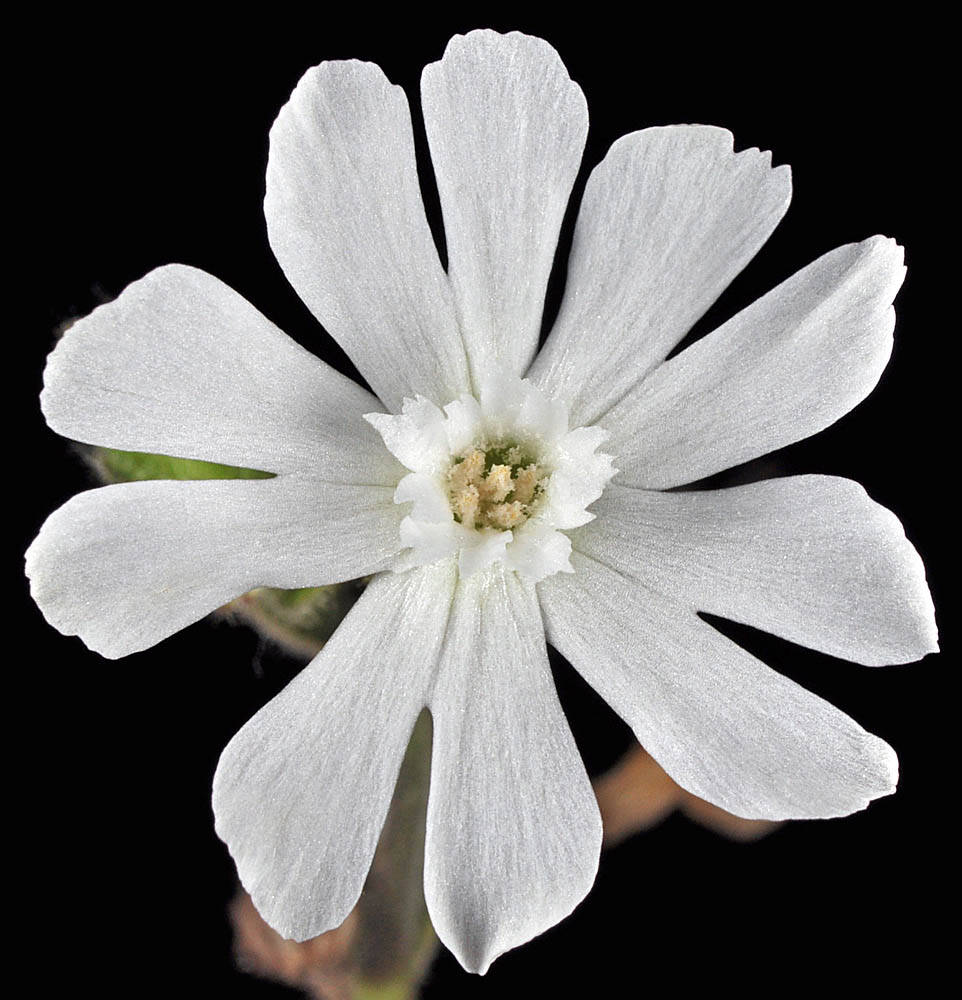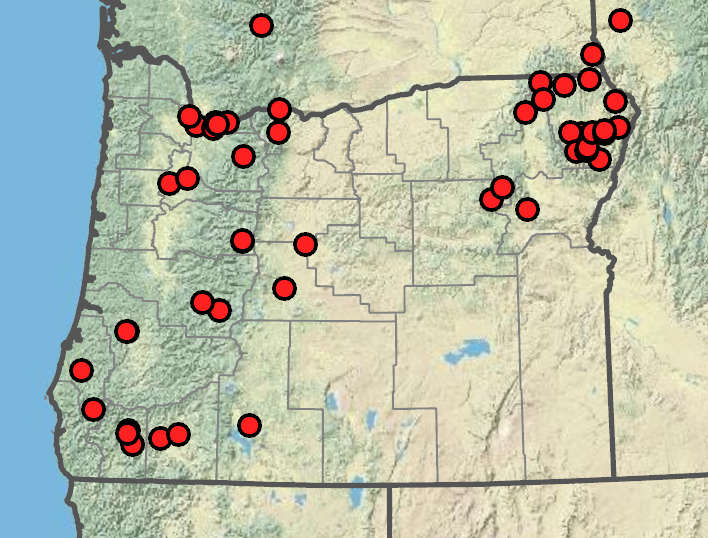Silene dioica
Silene latifolia
red campion
white campion
ascending, sometimes decumbent, 25–80 cm;
branches few;
hairs long-spreading below; ± glandular above.
erect or sometimes decumbent at base, 30–120 cm;
branches few, generally hirsute, often glandular above.
basal spatulate, 3–8.5 cm × 10–35 mm; upper cauline ovate to elliptic, gradually reduced upward.
basal often withering; middle cauline oblanceolate to elliptic, 5–14.5 cm × 6–30(56) mm; upper cauline lanceolate to elliptic, 1.5–8 cm × 3–15 mm, gradually reduced upward.
terminal; open cymes, not 1-sided;
pedicels softly hairy; seldom glandular.
terminal; open cymes, not 1-sided;
pedicels sometimes 0 (staminate flowers), glandular puberulent.
unisexual, ascending to erect;
calyces narrowly (staminate) or broadly (pistillate) campanulate, inflated in fruit, 10–15 mm, softly hairy, 8–12-veined, not netted above; pale commissures absent;
lobes 2–3 mm, rounded to acute;
petal appendages 4;
limbs 8–12 mm, bright pink; entire or lobes 2, 1–2 mm;
stamens equaling petal claws;
styles 5, equaling petal claws.
unisexual, ascending to erect;
calyces tubular (staminate) or ovoid (pistillate); much inflated in fruit, 12–20 mm, 10-veined (staminate) or 20-veined (pistillate), not netted above; pale commissures present; hirsute-glandular;
lobes 3–6 mm;
tips obtuse or acuminate;
petal claws glabrous; appendages 2;
limbs 7–9(12) mm, white; entire or lobes 2;
stamens slightly exserted or equaling petal claws;
styles 5, slightly exserted.
broadly ovoid to globose;
teeth 5, splitting to 10;
stalks 0.
ovoid;
teeth 5, splitting to 10;
stalks 1–2 mm.
1–1.6 mm, dark brown to black, not winged.
1–2 mm, gray-brown, not winged.
=24.
=24.
Silene dioica
Silene latifolia
Roadside ditches, edge of woods. Flowering May–Jun. 0–200 m. Casc, Est, WV. ID, WA; scattered across northern US and southern Canada; Europe. Exotic.
McNeill (1979) noted that the earliest collection of S. dioica in the western United States was made in Portland in 1905. This species is sometimes cultivated, and it can escape from such settings. Silene dioica and S. latifolia are interfertile, and hybrid plants (S. ×hampeana) with pale pink petals can be expected.
Disturbed areas, field edges, shaded riverbanks. Flowering May–Sep. 0–1800 m. BW, Casc, CR, ECas, Sisk, WV. CA, ID, WA; throughout North America except far north and southeast; Europe. Exotic.
Silene latifolia is an introduced species that may have arrived via ballast; the first collection in Oregon was made in 1911.
Rich Rabeler, Ronald Hartman
Rich Rabeler, Ronald Hartman
- Local floras:
BC,
OR,
WA
- Local Web sites:
Flora NW,
PNW Herbaria
WildflowerSearch
iNaturalist (observations)
USDA Plants Database
- LBJ Wildflower Center
- SEINet
- Plants of the World Online
- Encyclopedia of Life
- Wikipedia
- Google Image Search
- Local floras:
BC,
CA,
OR,
WA
- Local Web sites:
CalFlora,
CalPhotos,
Flora NW,
PNW Herbaria
WildflowerSearch
iNaturalist (observations)
USDA Plants Database
- LBJ Wildflower Center
- SEINet
- Plants of the World Online
- Encyclopedia of Life
- Wikipedia
- Google Image Search





